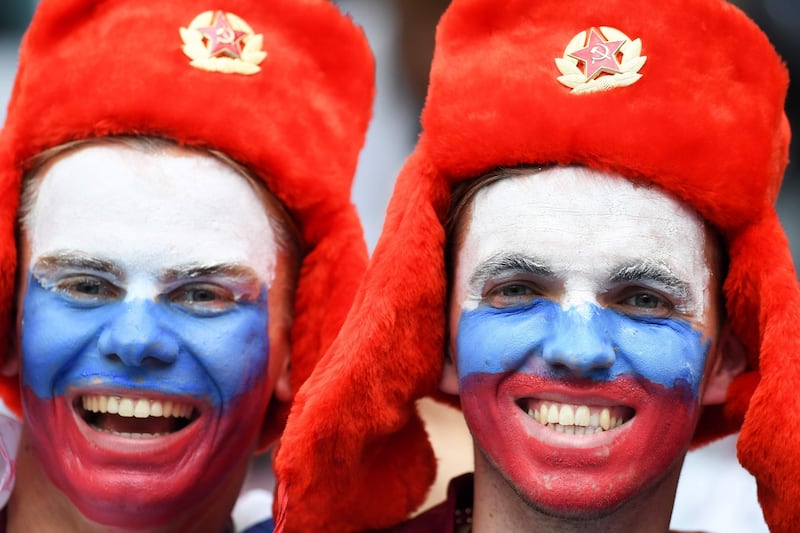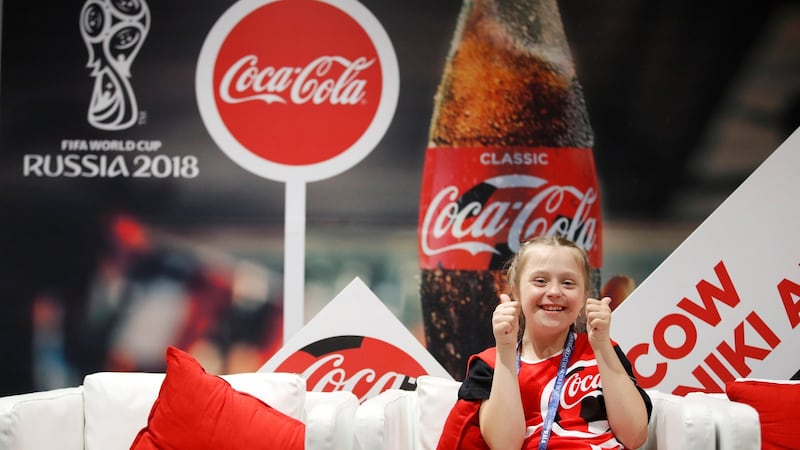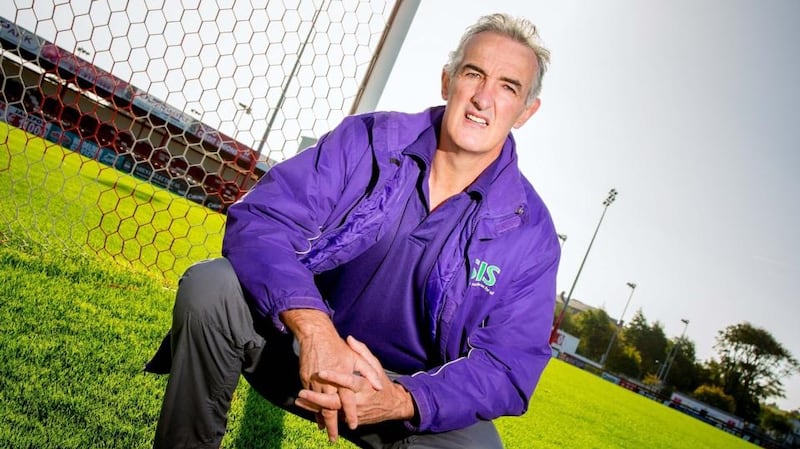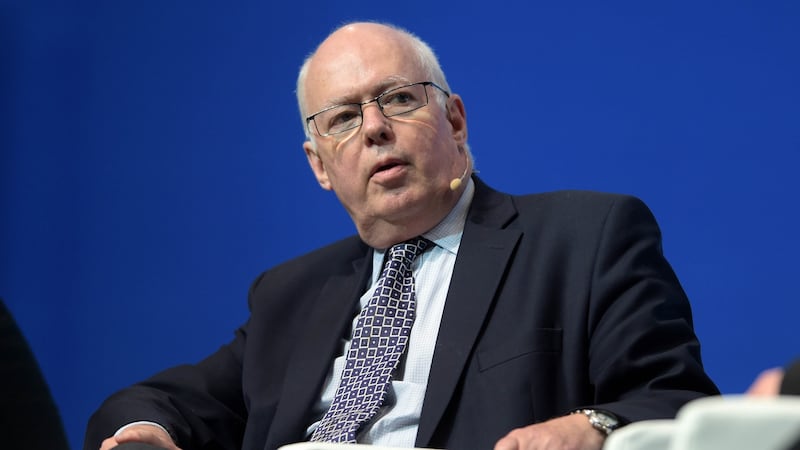As the Italian Conte Verde ocean liner set sail from Genoa to South America in 1930, this newspaper bore no mention of its departure or where it was going. Preoccupied by cricket and the Dublin Horse Show, not an inch of column space was dedicated to the delegation of four European teams that had set sail to take part in the inaugural Fifa World Cup.
For the European teams, the prospect of a three-week journey to Uruguay was unappealing. Nonetheless, on July 4th, 1930, some 13 teams converged on Montevideo to kick off what was then an invitation-only tournament.
The first World Cup was held in one city and boasted an average attendance of just over 24,000 punters per game. This year's tournament in Russia, which kicked off yesterday, has an average stadium capacity of more than double that, with the largest venue, the Luzhniki Stadium, big enough to cater for 81,000 people.

Over its 88-year lifespan to date, the World Cup has evolved from being a spectacle solely for the fans to a behemoth event which, in 2010 and 2014, attracted about 3.2 billion viewers and provided a plethora of companies with a platform off which they could promote their brands.

Sponsorship and television rights alone now bring in about $7 billion dollars for Fifa. This is a hugely important event for both Irish and international companies, with some winning bigger than others off the pitch.
Irish winners
One success story on this front is Sligo-headquartered SIS Pitches, which has been laying playing surfaces at World Cup grounds since Germany 2006. For SIS, the World Cup acts as a "very good calling card for new business", according to founder George Mullan.
In the knowledge that the World Cup would be held in Russia this year, Mullan and his team set up an office in the country nearly five years ago and picked up the contracts to design and build six of the 12 pitches being used, including that of the final and opening ceremony venue, the Luzhniki Stadium in Moscow.
"It opened up the Russian market for us and has allowed us to work in several of the other markets around Russia," Mullan told The Irish Times, noting that company turnover this year will finish at about €63 million. Work on the event preceded recent contract wins for the company, which has just signed deals with FC Barcelona and the Green Bay Packers American football team in Wisconsin.
Winner all right
Bookmakers, too, are big winners from events like the World Cup. "It's unfortunate Ireland aren't in it but it's an opportunity for us to get new customers into the business," said Mark O'Neill, chief financial officer of Boylesports.
“If someone wants to put on a bet hopefully they’ll think of Boylesports and they’ll stick around for the next time they want to put on a bet.”
While the World Cup provides a platform for significant growth for companies such as Boylesports, there is still a substantial initial capital spend. O’Neill noted that both marketing and advertising costs are higher around key events, so getting air time or online advertising is a costlier endeavour when the competition rolls around.
Nevertheless, previous tournaments have shown bookmakers to be winners from the competition. In 2014, Paddy Power (before it merged with Betfair in 2015 to become Paddy Power Betfair) brought in 148,000 new customers online over the four-week period.

Excluding the World Cup period, “football customer acquisition” increased 31 per cent. Including June and July, the same metric increased by 86 per cent.
In 2010, Paddy Power reported a gross win for itself of €18 million with total stakes on the four-week tournament amounting to €86 million.
Mobile apps
For Boylesports’ O’Neill, the tournament provides an opportunity for new products and the company this year launched a new mobile application as it records in excess of 25 per cent growth in mobile turnover.
“It’s an opportunity for us to show our business and grow it,” O’Neill said. “Will it make or break the Boylesports P&L [profit and loss account] for 2018? No. But it will manifest itself in whether we deliver on our growth targets for football betting.”
Like the bookmakers, drinks companies often win big from the tournament. Anheuser-Busch InBev, the giant behind brands including Budweiser, Stella Artois and Beck's, noted increased earnings before interest, taxes, depreciation and amortisation (ebitda) of 1.5 per cent in Europe in 2014 as a result of the World Cup. In the same year, sales and marketing expenses grew 11 per cent, partially down to promotion for the tournament.
Drinks wars
In the same year, Diageo, the owner of Guinness, increased its marketing spend in Latin America to "benefit from the Fifa World Cup". Four years earlier, for the South Africa tournament, Diageo stepped up its marketing activity in Africa on Guinness "significantly", primarily pumping money into television advertising and sponsorship of the Nigerian football team.
The World Cup is unquestionably important for brewers, with analysts from investment bank Morgan Stanley finding that beer volumes increase between 2 and 3 per cent in host countries during a World Cup year.
Back home, it's also a key part of RTÉ's calendar. In 2014, the World Cup final between Germany and Argentina attracted 859,000 viewers, making it the fifth most watched programme that year.
The 2014 tournament attracted an average audience of 335,000 for RTÉ2, up 28 per cent on 2010. Additionally, the broadcaster took in more money from advertising and sponsorship as a result of the World Cup, increasing revenue from that stream by 5 per cent in 2014.
TV rights
This time round, RTÉ’s advertising packages range from €8,600 to €105,000.
According to Zenith, a marketing agency, the tournament will add $2.4 billion (€2.05 billion) to the global advertising market during a season when television audiences are typically at their low point and reaching consumers that are typically difficult to reach.
Russian hoteliers, too, are in line for a boost, albeit not as significant as with previous hosts. According to travel research company STR, revenue per available room (RevPAR), a key metric calculated to incorporate both room rates and occupancy, in Rio de Janeiro in June 2014 increased 94.5 per cent on the same month in 2013.
To put that in perspective, Irish RevPAR in April 2018 increased 9.7 per cent compared with the same month in 2017.
Similarly, in Johannesburg in June 2010 RevPAR increased 99.6 per cent. Occupancy for the same period increased 27.7 per cent.
While positive for Russia, Moscow isn’t expected to witness the same success in room rate growth due to the fact its room count is “substantially higher than Rio and Johannesburg”, according to STR. And it’s not all positive for hoteliers in the host country.
In their report, STR analysts noted that while demand is helped by such a large event, occupancy comparisons are typically hurt on the back of significant supply growth, “as well as other regular hotel business avoiding the market during major events”.
“Supply growth leading up to such ‘mega events’ creates more room inventory and pressure on occupancy levels,” STR analysts said.
Home advantages
Although Russian hoteliers may see a positive spin off from the event, it would appear boosts like that for the home nation are relatively limited.
Brazil's São Paulo B3 stock index fell by 0.03 per cent during the 2014 tournament with trading volumes reaching a two-year low. In South Africa in 2010, the value of the JSE Africa Top40 index increased slightly, but the value of the rand against the dollar fell 1.12 per cent over the course of the tournament.
For South African deputy finance minister Nhlanhla Musa Nene, the tournament was supposed to be a “catalyst for development” and the government spent $3.12 billion to make that happen. The event positively contributed to both tourism and gross domestic product and was, across a series of metrics, a success.
But in the last two cases, the tournament was held in developing countries and the spending of billions on stadia is unlikely to be the best use of taxpayers’ money. In Brazil’s case, it spent $15 billion on the tournament primarily in areas that were already relatively developed. Some argue that an investment of that magnitude in education or health would have been more welcome than in a four-week football competition.
Social impact
Aside from the huge spend required from the host country, there are societal consequences. In Russia, for example, residents of an apartment block in Yekaterinburg were warned to stay off their balconies and not to stand near their windows on match days in case they're mistaken for attackers and shot by police snipers. In addition to that, with Russia staging this event in association with private investors, allegations of favouritism for Kremlin allies have arisen.
Above all of that, however, are the problems associated with what has become Fifa’s toxic image.

When multinational corporations got on board with World Cup sponsorship in the 1970s, it was the ultimate opportunity because the event was a global product.
"Once upon a time we had all the top companies wanting to come in because it was exclusive, it was limited," said Patrick Nally, widely considered to be the founding father of modern sports marketing.
Nally and his team were responsible for the commercial resurrection of the tournament, brokering a sponsorship deal with Coca-Cola for the 1978 tournament that would ultimately last four decades.
“Over the years the image has slipped and, as the corruption issues have come to the fore, you’ve had a lot of the top brands not renew,” Nally said.
It's worth noting that Adidas, one of those early enthusiasts of sponsoring the tournament, is still involved and in 2014 grew its football sales by more than 20 per cent to €2.1 billion, "exceeding even our own high expectations", it said.
Fifa brand
Nally concedes that the companies involved early on will still benefit hugely from their relationship with Fifa, but for new companies doing due diligence to establish where they’ll put their marketing spend, the Fifa brand appears nothing other than toxic.
Nonetheless, Fifa has been able to convince other brands to join for political reasons, Nally says. He instances Gazprom, which is majority owned by the Russian government, and the state-owned Qatar airways.
The value of Fifa World Cup sponsorship for Russia has declined when compared with the tournament in South Africa, according to research by Nielsen Sports.
The research company's World Football Report for 2018 found Fifa sponsorship revenue fell from $1.629 billion in 2014 to $1.450 billion for this year's tournament.
Nielsen concluded that the sponsorship cycle for Russia 2018 was a “tougher sell” but noted that some new sponsors, including from China, had “helped Fifa weather the storm”.
Although concerns around the tournament exist, those generally subside when the first match kicks off, according to Nally.
“There are concerns up until the first match starts and then the fairytales start being told, the wonder kids start being found . . . the whole theatre of dreams starts unfolding and people get wrapped up in it, it’s magical.
“The event is magical, the sad thing is the custodians of the magical event are badly tarnished and badly behaved,” he says.
On Wednesday, Fifa members chose the United States, Canada and Mexico to jointly host the 2026 World Cup. Perhaps this will help to repair the toxic brand of Fifa and allegations of corruption and cronyism will fade.
In the meantime, it’s game on for the next four weeks as companies strive to make Russia 2018 a bumper period for their businesses.














